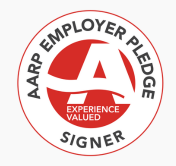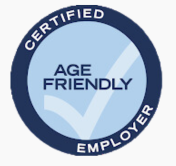Our phone rings daily with calls from small businesses in a quandary. They have critical roles to fill but feel the squeeze of tight budgets and limited cash flow. They know if they hire too quickly they risk tipping their businesses into unprofitable and possibly unsustainable growth, yet if they hire too slowly they risk stifling that growth. At FlexProfessionals, over 80% of our clients are small businesses navigating this difficult balancing act, and we’ve seen the good, the bad and the ugly in how they go about building their organizations. Here are four of the most common staffing approaches small businesses adopt, why you should be wary of them and some suggestions for fixing them:
Jack-of-all-Trades
The most common staffing structure we see in younger businesses is the jack-of-all-trades model where a single individual in the company becomes synonymous with “back-office.” Amazingly capable, this individual may start out in a specific role, but over time assumes responsibility for everything operational including office management, bookkeeping, human resources, contracts administration, information technology and even coffee! This model is largely driven by a business’s desire to contain costs, and it works for a while, but eventually as the business grows so does its complexity and the jack-of-all-trades has neither the capacity nor time to effectively master the more technical or nuanced components of these functions such as employment laws, GAAP principles, IRS rules, cash flow strategies and contract compliance. Productivity starts to wane as the learning curve becomes steeper, and if the company continues with this model it may find itself exposed to potential legal or financial risks and teetering on a very fragile platform for growth.
Recommendation: Don’t get rid of the jack-of-all-trades, but supplement him or her by gradually putting the pieces in place for a sturdier back-office. Start by hiring a part-time professional or contractor with expertise to assess potential risks and infrastructure weaknesses. Develop a back-office design and a target organizational model and implement it incrementally with part-time professionals knowledgeable in specific functional areas. Increase their hours as the company grows so your cost structure stays in line with your revenue. Many of the part-time professionals with whom we work are looking for exactly this type of opportunity. They want to get into an organization part-time on the ground level and grow in hours and responsibility as the company grows.
Lone Ranger
The lone ranger model is similar to the jack-of-all-trades, however it is the owner him- or herself who is manning the back-office, front office and everything in between! An overarching desire to contain costs drives this model, but as time goes by, the job of extraction from day-to-day operations in order to hire someone becomes so daunting that paralysis sets in. Unfortunately, growth comes to a screeching halt with this model. Beyond carrying the same risks as the jack-of-all-trades model, it also takes the owner’s attention away from focusing on revenue-generating, customer-expanding, top-line strategies.
Recommendation: Hire a part-time jack-of-all-trades to start and offload some of the day-to-day operations of the business to free up your time. Turn your focus to driving the revenue side of the business and developing a vision and plan for gradually scaling up the back-office. As needed, hire part-time professionals to provide expertise and ultimately fill the support functions as you grow until your top line can support full-time staff members.
Miser
The miser model contains costs at all costs. Everyone is a 1099, they are underpaid, benefits are paltry and incentives such as bonuses or flextime for hard work are unheard of. This is an extremely short-sided model that we’ve seen frequently and sometimes get caught up in as a staffing company. Talent levels with this model are almost always subpar and employees have one foot out the door. Productivity is poor and turnover high. We’ve also seen companies violate IRS employee classifications (1099 vs. W-2) and Department of Labor laws (benefits and overtime pay) just to shave a few dollars off their labor costs. This can, when discovered, lead to significant fines. The miser model never ends well. The cost of disenfranchised employees and resulting lost customers, lost productivity and lost time recruiting, hiring and training replacement employees almost always outweigh the intended cost savings of this model.
Recommendation: Know the market rates for the positions for which you hire and set your pay rates accordingly. If you can’t afford market rates, consider offering flexibility, part-time hours or other unique benefits to entice candidates who see these factors as part of the overall compensation package. Further sell candidates by talking up the characteristics that make your organization unique such as a special culture, growth opportunities or appealing mission. Where possible, tie compensation to revenue growth in the form of commission pay or bonuses. Understand and comply with IRS and DOL labor laws.
Revolving Door
The revolving door model, in an effort to save time and money, pays little attention to its human resources practices and processes. Bodies are thrown at problems in search of a quick fix. Staffing needs are filled in minutes with shoddy job descriptions, questionable recruiting sources and minimal screening or training. We’ve had clients try to hire candidates with a one-sentence position summary and a 15 minute phone screen. Candidates hired haphazardly like this are frequently unqualified for the position, frustrated because of misaligned expectations and fit poorly with the company’s culture. As the model’s name implies, this approach is a recipe for continuous turnover and mounting expenses associated with recurring recruiting, high unemployment tax rates, productivity losses and morale drain. More time and money are spent recovering from the revolving door than the investment in sound hiring processes that can prevent it.
Recommendation: Develop a disciplined process for recruiting and screening candidates. If you do not have experience with hiring, attend a workshop or training session or work with a consultant to develop some simple but well-designed tools and approaches. At a minimum you should have a standard job description template, some proven go-to recruiting sources, a structured method for interviewing and evaluating candidates and a thorough on-boarding process. As you hire and learn from your successes and mistakes, continue to refine and evolve your approach.
Although the intent of each of these staffing models is to contain costs, they can in fact cost a small business its health. Take stock of your organization’s model (use this assessment). Are you experiencing lost productivity or risking potential fines or legal fees because you’ve outgrown the jack-of-all-trades or lone ranger models? Is turnover high and chronic rehiring consuming all of your time because your organization is slipping into the miser or revolving door model? If so, there are some fairly simple and cost-effective solutions such as part-time or project-based resources, creative compensation packages and disciplined hiring processes that can help correct your course and put your company on a more stable and scalable foundation for growth. Make the investment.
Gwenn Rosener is co-founder of FlexProfessionals, LLC, a niche staffing company specializing in sourcing professionals for part-time, project-based and flexible work arrangements. Contact: gwenn@flexprofessionalsllc.com.









